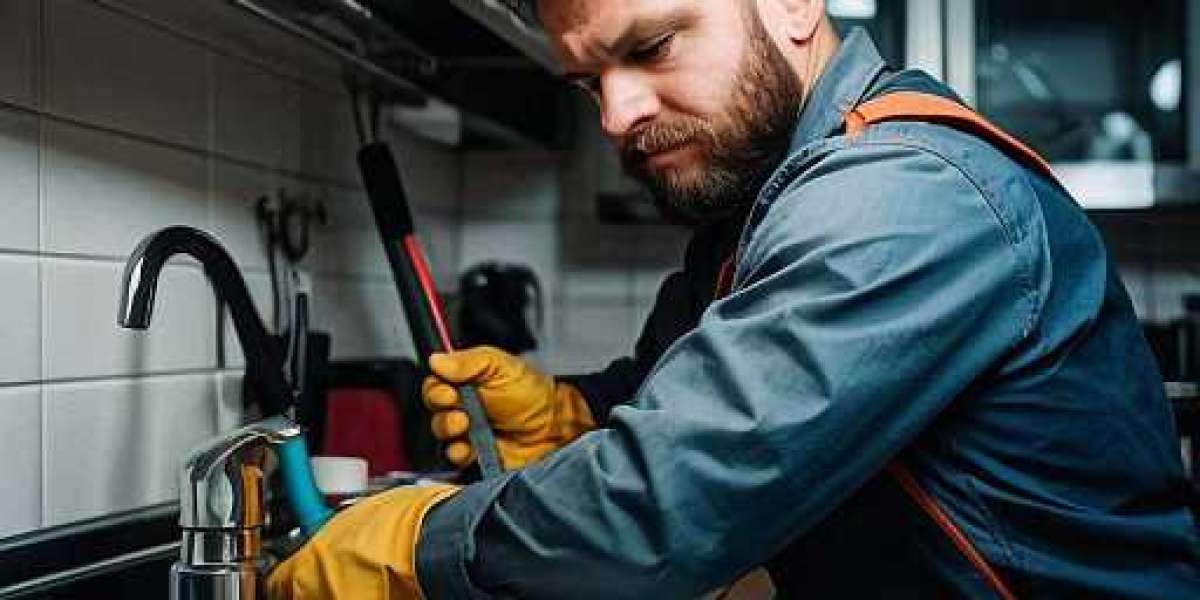Original Title: [Collection] Encyclopedia of Common Exploration Techniques and Methods for Landslide This article is selected from the book "Technical Guidelines for Landslide Control". First published on the Wechat Public Number of the Voice of Natural Resources At present, the commonly used exploration techniques and methods of landslide mainly include engineering geological mapping, exploration (drilling, mountain engineering, geophysical exploration), sampling and testing, monitoring and so on. Landslide exploration should select appropriate exploration techniques and methods according to the nature and requirements of the problems to be identified. 5.1 Engineering geological mapping Engineering geological surveying and mapping is the basis of landslide exploration work such as drilling, mountain engineering and geophysical prospecting. It is carried out first in various exploration methods and is an important technical means in the preliminary and detailed exploration stages of landslide. The relevant requirements are as follows. 1) Landslide engineering geological surveying and mapping shall be carried out on the basis of making full use of remote sensing interpretation results and existing regional geological data. The scope of surveying and mapping shall include the landslide section and its adjacent areas. The rear part shall include a certain range of stable slopes or catchment depressions above the back wall of the landslide. The front part shall include stable sections below the shear outlet. Both sides shall reach a certain distance beyond the landslide or adjacent valleys. The wading landslide shall reach the water surface of the river (reservoir) or the opposite bank, which is generally controlled at 50 ~ 100m outside the landslide boundary. At the same time, it should include the scope of possible hazards and derived disasters. In some cases, it shall be widened longitudinally to the top of the slope, the shoulder of the valley, the valley bottom, lithology or slope and other important changes, and shall include groundwater outcrops and important geological structures horizontally. 2) In different stages of landslide exploration, the scale and accuracy requirements for engineering geological surveying and mapping are different, and the relevant technical requirements are also different. See the introduction in Chapter IV of this guide for the specific technical requirements of each stage. 3) The engineering geological surveying and mapping method adopts the comprehensive survey method, and the important geological phenomena such as boundary, crack, soft interlayer and shear outlet shall be traced. 4) In the covered or unobvious sections, there should be manual exposure points to ensure the accuracy of surveying and mapping and identify the main engineering geological problems. 5.2 Exploration Landslide exploration techniques mainly include drilling, mountain engineering (well exploration, trenching, tunnel exploration) and geophysical exploration. Exploration is an important part of landslide exploration work, and the workload and working method should be determined according to the complexity of geological conditions in the landslide area. The main task of landslide exploration is to find out the scope, thickness, material composition of the landslide mass, the number and shape of the sliding surface (zone) and the material composition of each sliding zone; basically find out the number, distribution, source and dynamics of groundwater aquifers in the landslide mass and the hydraulic connection of each aquifer. 5.2.1 Drilling Drilling is used to understand the internal composition and structure of geological hazard body, including the composition of rock and soil, the situation of sliding surface (zone), the situation of controlling structural plane of collapse dangerous rock and the state of groundwater, observe the deep displacement, and collect various rock and soil samples. The structure of the landslide body and the location and burial depth of the groundwater aquifer in the landslide body can be judged through the core collected by drilling, combined with the drilling speed, empty drilling, sticking, flushing fluid leakage and other phenomena in the drilling construction. The borehole can also be used for pumping test, water injection test, geophysical prospecting well, etc., to measure hydrogeological parameters such as groundwater level and water inflow, and to take water samples for water quality analysis and other hydrogeological work. Landslide exploration boreholes can also be used for long-term monitoring of landslide deep displacement and groundwater. Drilling is the most important and commonly used technical means for landslide exploration, and the workload should be determined according to the complexity of geological conditions in the landslide area and the technical requirements in the exploration stage. Expand the full text 5.2.1.1 Selection of drilling technology and method 1) The drilling method with small disturbance to the landslide stratum shall be selected as far as possible to improve the core recovery. 2) Dry drilling shall be adopted for cohesive soil, silty soil, artificial fill and sandy soil that is not easy to collapse above the groundwater level in the sliding mass. 3) The rock and soil layer below the underground water level in the sliding mass, as well as the sliding zone and the range of 5m above and below the sliding zone shall be drilled with drilling methods that have little disturbance to the rock and soil of the landslide, such as double-tube single-acting, double-tube double-acting, pump-free reverse circulation and other drilling methods. 5.2.1.2 New Drilling Technology for Landslide — — Air Dth Hammer Coring Drilling Technology with Casing Aiming at the technical problems of low core recovery, low drilling efficiency and drilling fluid leakage affecting formation stability in complex strata such as Quaternary accumulation strata, broken rock strata and landslide strata, the Institute of Exploration Technology, Chinese Academy of Geol ogical Sciences, adopts the principle of air drilling and combines the down-the-hole hammer drilling technology in the field of engineering drilling with the core drilling technology in the field of core drilling. By optimizing the design, a new drilling technology, air Dth hammer simultaneous casing coring drilling technology,rock drilling tools, has been formed, which has the advantages of fast drilling speed, good coring quality and no effect on formation stability. GGQX series down-the-hole hammer and casing coring drilling tools and other core technology products have been developed, forming three product specifications of GGQX-168, GGQX-146 and GGQX-127. The technical features of the air Dth hammer coring and casing drilling technology are as follows: (1) Down-the-hole hammer and casing coring tool A. Drilling tool structure As shown in Fig. 5.1, the drilling tool is mainly composed of pneumatic impactor (down-the-hole hammer), center coring tool and casing shoe assembly. The former two are connected as a whole, which is the part that can be lifted and lowered with the drill pipe (for taking the core). The latter is attached to the casing string and remains in the hole to protect the wall. Figure 5.1 Down-the-hole Hammer Coring Tool B. Characteristics of drilling tools The drilling tool adopts the principle of synchronous and concentric casing drilling, and the casing following up with drilling isolates the hole wall in time, thus creating good coring drilling conditions. The stepped drilling principle of a center bit (lip surface) leading casing bit is adopted, and a high-pressure airflow channel is separated from a low-pressure channel, so that high-pressure airflow is directly exhausted from a high-pressure exhaust hole, and the high-pressure airflow is prevented from scouring the core at the bottom of the hole; and the core is forced to be extruded into the core tube, so that the high-quality core can be obtained. It not only has the advantages of fast drilling speed and good wall protection effect, but also has the ability to collect high-quality cores. The drilling tool has the advantages of simple structure, easy operation and good practicability. C. Drilling tool specification . Main technical parameters See Table 5.1 for drilling tool specifications and main technical parameters. Table 5.1 Main technical parameters of air Dth hammer simultaneous casing coring drilling tool (2) Supporting Dth hammer coring drilling tool As the drilling depth of the down-the-hole hammer and casing coring tool is generally not more than 40 m, in order to solve the drilling requirements of the hole depth greater than 40 m, and to deal with the drilling faults such as core shedding and a large number of cuttings precipitation that may occur during the drilling of the down-the-hole hammer and casing coring tool, the corresponding down-the- hole hammer coring tool is provided for the casing coring drill. A. Drilling tool structure As shown in Fig. 5.2, the Dth hammer coring tool belongs to the structural type of double-acting double-tube coring tool; it is mainly composed of upper joint 1,DHD Drill bit, anti-torque washers 2 and 8, O-rings 3 and 11, pin 4, inner tube joint 5, outer tube 6, inner tube 7, coring bit 9 and inner tube nipple 10. The upper connector 1 is directly connected to the air impactor. Fig. 5.2 Structure Diagram of Dth Hammer Coring Tool Corresponding to the down-hole hammer and casing coring drill, the down-hole hammer coring drill has three specifications, wherein, the Φ127 drilling tool is matched with the GGQX-168 drilling tool; the Φ108 drilling tool is matched with the GGQX-146 drilling tool; and the Φ89 drilling tool and the GGQX- 127 drilling tool. See Table 5.1 for drilling tool specifications and main technical parameters. B. Use (3) Brief introduction to the application of air Dth hammer simultaneous casing core drilling technology The Dth hammer simultaneous casing drilling technology has been tested and applied in the exploration projects of Jialin Village Landslide in Changdu County, Xiatong Street Landslide in Changdu Town, Luding Bridge Power Station in Dadu River, Southern Suburb Water Plant in Xigaze, and K284 + 798 ~ K284 + 854 Section of Mianguang Road in Tibet, and good results of simultaneous casing drilling technology have been achieved. The core recovery is more than 90%, the drilling speed is more than 2.5m/m, and the comprehensive drilling efficiency is improved by more than 100% compared with the conventional method. Fig. 5.3 shows the slip zone core taken by down-the-hole hammer simultaneous casing coring drilling, and Fig. 5.4 shows the core taken in the riverbed accumulation formation. Fig. 5.3 Sliding zone core taken in down-the-hole hammer simultaneous casing coring drilling Fig. 5.4 Core of riverbed accumulation layer taken by down-the-hole hammer simultaneous casing coring drilling 5.2.2 Mountain engineering Mountainous engineering includes trenching, well exploration, tunnel exploration, etc. See Table 5.2 for the purpose and use conditions of various mountainous engineering, which can be selected according to the geological conditions of landslide and the technical requirements of exploration stage. Table 5.2 Brief Table of Suitability of Landslide Exploration for Mountain Engineering (1) Trenching Trenching is a simple shallow excavation project, and the excavation depth is generally not more than 5m. Simple excavation tools can be used. According to the type of rock and soil mass and the depth of the trench, slope excavation can be carried out with reference to the excavation regulations of the slope rate method. When the soft stratum and the exploratory trench are deep, temporary protective measures such as wood plate and steel pipe support shall be taken. Trenches that are no longer used after exploration shall be backfilled to restore the original ground. (2) Well exploration The construction depth of the exploratory well for landslide exploration can reach 20 m, which is mainly used to find out the structure of the complex landslide with medium or above and deep sliding surface, collect the undisturbed soil samples of the sliding zone, and conduct large-scale shear tests in the well. Shaft is generally used for well exploration. Due to the large amount of earthwork excavation, professional excavation, muck lifting and other machinery and equipment are required. The construction safety requirements are high, and special support is required for the shaft wall. The vertical shaft formed by excavation can be used as a catchment well for subsequent landslide control and drainage works and a monitoring well for hydrogeological dynamic changes. Unused exploratory wells shall generally be backfilled to restore the original ground. (3) Adit exploration Adit exploration is one of the large-scale exploration projects used to identify deep landslide or complex landslide. Adit exploration is generally horizontal tunnel engineering. The portal is mainly selected at the front or rear edge of the landslide, and the horizontal tunnel passes through to a certain depth near or below the sliding bed. It is mainly used to find out the structure of the complex landslide, especially the location of the sliding zone (or weak structural plane), and to collect the undisturbed soil samples of the sliding zone for large-scale shear test in the tunnel. The section of the tunnel body of the adit exploration mostly adopts the arched tunnel of the city gate, which is generally 1.8 m high and 1.5 m wide. The excavation of earthwork and stonework for adit-exploration construction is large, which requires a professional tunnel construction team to use drilling and blasting excavation, muck transfer and other machinery and equipment, which requires high construction safety, and requires special support for the roof and wall of the tunnel. The portal shall be provided with a pilot tunnel, mining dth bit ,mining drill bit, and the slope at the top of the tunnel shall be protected. The tunnels formed by excavation are generally used as drainage tunnels for subsequent landslide control projects. 5.2.3 Geophysical Prospecting The main task of geophysical prospecting for landslide is to delineate the spatial distribution boundary of landslide body, detect the water content of landslide area, detect the number, depth and shape change of structural plane and sliding plane, and detect the stratigraphic structure, concealed boundary and concealed geological body of landslide body. (1) Geophysical methods commonly used in landslide exploration Geophysical methods commonly used in landslide exploration and their application conditions and technical and economic characteristics are shown in Table 5.3. Table 5.3 Brief Table of Suitability of Geophysical Prospecting Methods for Landslide (2) Selection principle of geophysical prospecting method for landslide In order to give full play to the role of geophysical exploration techniques and methods in geological hazard exploration, the following selection principles should be considered in the selection of specific methods and means. (3) Optimized combination of geophysical prospecting methods for landslide According to the Code for Investigation of Landslide Control Engineering (GB/T32864 — 2016), the recommended optimization combination method of landslide geophysical exploration methods is shown in Table 5.4. Table 5.4 Optimized Combination of Geophysical Methods for Landslide Note: ∗ Available methods; ∗ ∗ Common methods; ∗ The preferred method. 5.3 Sampling and testing In the process of landslide exploration, rock, soil, groundwater and other samples should be systematically taken for analysis and identification to obtain the necessary parameters. The test work mainly includes field test and indoor test, which are generally carried out in coordination. The test content is to meet the needs of landslide stability evaluation and control engineering design. The test objects shall include sliding mass, sliding zone, sliding bed rock and soil mass and groundwater; the main test contents include physical properties, mechanical properties, groundwater composition and corrosiveness, rock and soil chemical composition, mineral composition, microstructure and other analysis, which shall be carried out according to specific needs. (1) Hydrogeological in-situ test The main purpose of hydrogeological in-situ test is to understand the state of landslide aquifer and the permeability coefficient of soil layer. Test methods include borehole water injection test, borehole pumping test and test pit water injection test. If there is groundwater in the landslide mass, pumping test shall be carried out. If the amount of groundwater in the landslide mass is small, simple pumping test (lifting barrel pumping) can be used. If the amount of groundwater in the slope mass is large, a maximum drawdown pumping test shall be carried out, and the stability time shall be 4 ~ 8 H. If there are multiple aquifers in the slope mass, stratified pumping test should be carried out. When the landslide mass is above the groundwater level, the water injection test should be adopted. When the composition and structure (permeability) of the rock (soil) mass in the vertical direction are quite different, the layered water injection test should be carried out. (2) Geotechnical field test The geotechnical field test includes the in-situ large-area direct shear test of the sliding zone soil and the large-volume gravity test of the sliding zone soil and the sliding mass soil. Before the shear test, the saturated state and material composition of the specimen shall be described; after the test, the characteristics of the shear plane shall be described, the shear angle and actual shear area shall be measured, and the shear results shall be corrected. Volumetric method should be used for bulk density. The volume of test pit should be determined according to the composition and particle size of soil, and the volume can be measured by water injection. (3) Rock and soil indoor test The geotechnical laboratory test shall comply with the provisions of Standard for Engineering Rock Mass Test Method (GB/T50266 — 2013) and Standard for Soil Test Method (GB/T50123 — 1999). Indoor triaxial compression test should be carried out for the soil with potential sliding zone without sliding surface. When the test conditions are not available and the effective stress intensity index is required, the slow shear test can be used. Refer to Table 5.5 for the contents of indoor test of geotechnical analysis. Table 5.5 List of Indoor Test Items for Physical and Mechanical Properties of Rock and Soil Note: √ indicates the test to be conducted, indicating the test to be conducted as required; water quality analysis shall be determined as required; rock and soil samples for indoor test shall be taken in accordance with JGJ/89-92 Technical Standard for Sampling of Undisturbed Samples. 5.4 Monitoring Dynamic observation and monitoring of landslides include long-term observation of displacement and observation of groundwater in landslides. The purpose of observation and monitoring is to analyze the formation mechanism, activity state and development trend of landslides. For some landslides, especially the bedding landslides, the monitoring data are also helpful to analyze the spatial distribution characteristics of the sliding surface. Through observation and monitoring, we can grasp the moving process of the landslide, determine the time when the landslide reaches the maximum moving speed and the state of the landslide, so as to analyze and predict the future development trend of the landslide. Landslide monitoring mainly includes surface deformation monitoring, crack monitoring, building deformation monitoring, sliding surface displacement monitoring, groundwater level monitoring, soil moisture detection, etc; If adit and shaft are arranged for exploration, it is advisable to monitor the displacement of the mouth of the adit (shaft), the displacement of the sliding zone in the adit (shaft), the change of crack convergence and the displacement dislocation. The specific technical methods and selection methods of landslide monitoring are shown in Part VI of this Guide. 5.5 Application cases of exploration technologies and methods The exploration techniques and methods shall be reasonably selected according to the geological environment conditions of the landslide, the technical requirements of the exploration stage and the exploration construction conditions, so as to find out the type, structure, scope, shape and other characteristics of the landslide and obtain reasonable physical and mechanical parameters. The following is an introduction to the practical application of various exploration techniques and methods by taking the landslide exploration in Jianshe Street, Danba, Sichuan as an example. Jianshe Street Landslide in Danba County, Sichuan Province is an ancient landslide located in the southwest of Danba County. Since 2003, the landslide began to revive gradually, and the deformation intensified in December 2004, so the engineering treatment must be carried out, so the landslide exploration work was carried out. The landslide is a large accumulation landslide, and the landslide area is mainly composed of loose ancient landslide deposits. The plane of the landslide body is in the shape of a ring chair, with an elevation of 1881-2110m and a height difference of 223m between the front and rear edges. The front edge of the landslide reaches Jianshe Street in Danba County. The landslide mass is 200 ~ 250 m wide, 290 m long, 0.08 km2 in area, 30 m in average thickness and 2200 × 104 m3 in volume. The front part of the landslide is a 6 ~ 28 m high dry block stone slope protection scarp built after artificial excavation, with a slope of 56 ° ~ 65 °. The average slope of the middle part is 31 °, and the rear part is a gentle slope section with a slope of about 10 °. According to the deformation development process, genetic mechanism and sliding characteristics of the landslide mass, the landslide area is divided into three areas: the main sliding area (including two subareas I-1 and I-2), the left rear traction area (II) and the right rear traction area (III) (Fig. 5.5 and Fig. 5.6). Figure 5.5 Landslide behind Jianshe Street, Danba, Sichuan Fig. 5.6 Plan of Landslide behind Jianshe Street in Danba, Sichuan According to the geological environmental conditions of the landslide, on the basis of the measured 1:500 topographic map, the comprehensive exploration was carried out by using the technical methods of engineering geological mapping, geophysical exploration, drilling, trenching, field and indoor tests, and landslide dynamic monitoring. The application of each exploration technology and method is as follows. (1) Engineering geological mapping The engineering geological mapping of the landslide area and a certain range of peripheral slope sections has been carried out, covering an area of 0.342 km 2. Through engineering geological surveying and mapping, the external shape, elements and deformation characteristics of the landslide are identified, which provides the basis for geophysical exploration, drilling and trenching, and monitoring. (2) Geophysical prospecting According to the characteristics of the accumulation layer landslide of Jianshe Street landslide, the high and steep terrain, and the difficulty of heavy exploration work such as drilling and mountain engineering, the application of geophysical exploration methods is strengthened in exploration technology and methods. High-density electrical method and electrical sounding method are used in geophysical prospecting. 15 (scale 1:500) geophysical profiles totaling 4.9 km and 3 (scale 1:200) geophysical profiles totaling 3.5 km are arranged, and 970 high-density electrical survey points and 18 electrical sounding survey points are set. Wenner device is selected for high-density electrical method, and the electrode spacing is 5m. The number of electrodes is 60 and the supply voltage is 180 V. Symmetrical quadrupole device is used for electrical sounding, the minimum AB/2 is 1.4m, the maximum is 115m, MN/2 is 1m, and the power supply voltage is 180V. Through geophysical prospecting, drilling and engineering geological mapping, the thickness of the sliding mass in the landslide area and the undulation and burial depth of the underlying bedrock are basically ascertained. (3) Drilling According to the armchair landform characteristics of the landslide and the distribution of cracks, one longitudinal main exploration line and two auxiliary exploration lines are arranged along the main sliding direction, and one main exploration line and two auxiliary exploration lines are arranged horizontally. Seven boreholes are arranged at the intersection of the exploration line, with a total footage of 318 m and an average hole depth of 45 m. In the later stage, 7 supplementary exploration boreholes were arranged according to the needs of the treatment project. The main exploration profile is shown in Figure 5.7. Fig. 5.7 Longitudinal Section of Landslide at the Back of Jianshe Street in Danba, Sichuan Full-hole coring is adopted for drilling, and vegetable glue hole protection or casing drilling technology is adopted for the overburden, so that the core recovery rate of the landslide body reaches more than 80%. The drilling identified the thickness of the landslide, the location and shape of the sliding surface, the depth of groundwater and the nature of the underlying rock and soil mass of the sliding surface, which provided basic geological data for the calculation of landslide stability and the judgment of its development trend. (4) Mountain engineering Trenching was used in mountain engineering, and four trenches were set at the cracks at the rear edge of the landslide to understand the contact relationship between different rock and soil masses and the tensile cracks, and sampling tests were carried out. (5) Field and indoor tests Soil sample: the landslide mass is mainly composed of block stone and soil, and it is difficult to obtain the soil sample, so only one group of soil sample is taken from ZK4 borehole for indoor routine test. In combination with the trench excavation work at different locations on the sliding mass, 6 groups of heavy gravity tests were completed. Rock samples: 8 groups of samples were taken from each borehole for laboratory tests, and the physical and mechanical data of rocks were obtained for the design of landslide control. (6) Landslide dynamic monitoring In order to fully grasp the landslide deformation activities, since January 21, 2005, 46 professional monitoring points (total station monitoring) and 26 simple artificial monitoring points have been gradually set up on the landslide mass according to the landslide activity conditions, and special personnel have been assigned to conduct manual inspection on various deformation and failure signs of the slope mass. At the same time, three deep displacement monitoring holes are arranged on the main exploration line of the landslide,Mining Drilling Equipment, and the deep displacement of the landslide is monitored in real time by the borehole inclinometer. Abundant surface and deep displacement monitoring information provides an important basis for landslide stability analysis and information design and construction of control engineering. This article is selected from Technical Guidelines for Landslide Prevention and Control (Yin Yueping et al., Geological Publishing House, 2018). Return to Sohu to see more Responsible Editor:. wt-dthtools.com
Search
Popular Posts
-
 Anti-haze and anti-virus mask specially designed for children, unique valve filter design, can be used repeatedly! _Woob
By Deering
Anti-haze and anti-virus mask specially designed for children, unique valve filter design, can be used repeatedly! _Woob
By Deering -
 Supersystem _ 20200215155705.
By Aengaiyu9ok
Supersystem _ 20200215155705.
By Aengaiyu9ok -
 Üsküdar Su kaçak tespiti
Üsküdar Su kaçak tespiti
-
 Fate falls on Korean entertainment
By Deering
Fate falls on Korean entertainment
By Deering -
 Do you really know the guide wire of urology? _ Ureter
By Bourque
Do you really know the guide wire of urology? _ Ureter
By Bourque



